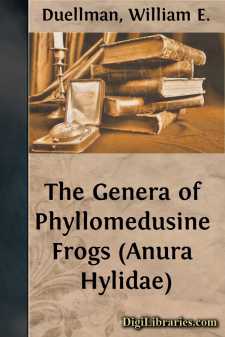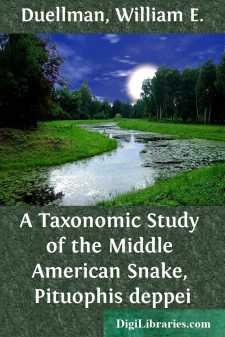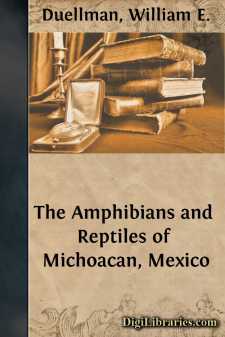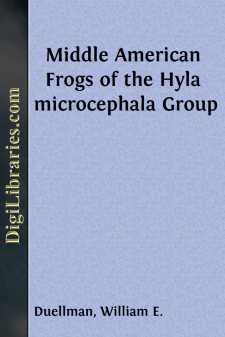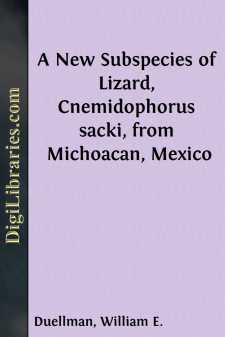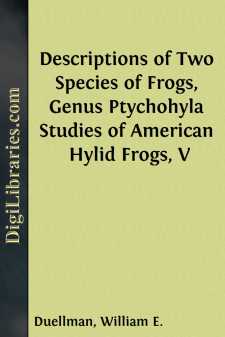Categories
- Antiques & Collectibles 13
- Architecture 36
- Art 48
- Bibles 22
- Biography & Autobiography 813
- Body, Mind & Spirit 142
- Business & Economics 28
- Children's Books 17
- Children's Fiction 14
- Computers 4
- Cooking 94
- Crafts & Hobbies 4
- Drama 346
- Education 46
- Family & Relationships 57
- Fiction 11829
- Games 19
- Gardening 17
- Health & Fitness 34
- History 1377
- House & Home 1
- Humor 147
- Juvenile Fiction 1873
- Juvenile Nonfiction 202
- Language Arts & Disciplines 88
- Law 16
- Literary Collections 686
- Literary Criticism 179
- Mathematics 13
- Medical 41
- Music 40
- Nature 179
- Non-Classifiable 1768
- Performing Arts 7
- Periodicals 1453
- Philosophy 64
- Photography 2
- Poetry 896
- Political Science 203
- Psychology 42
- Reference 154
- Religion 513
- Science 126
- Self-Help 84
- Social Science 81
- Sports & Recreation 34
- Study Aids 3
- Technology & Engineering 59
- Transportation 23
- Travel 463
- True Crime 29
The Genera of Phyllomedusine Frogs (Anura Hylidae)
Description:
Excerpt
One of the most distinctive phyletic lines among the diverse Neotropical hylid frogs is composed of a group of 40 species placed in the genus Phyllomedusa (Funkhouser, 1957) or in two or three different genera (Goin, 1961; Lutz, 1966). These species differ from all other Neotropical hylids by possessing a vertical, instead of horizontal, pupil. The only other hylids having a vertical pupil belong to the Papuan genus Nyctimystes. Goin (1961) erroneously stated that Nyctimantis and Triprion have vertical pupils.
Although limited information is available on the cytotaxonomy of hylids, the data show that phyllomedusine species have n=13 (2n=26) chromosomes. Acris has n=11 (2n=22) (Cole, 1966). Members of the Hyla leucophyllata, microcephala, and parviceps groups have n=15 (2n=30), Gastrotheca ceratophrys has a haploid number of 14, the Papuan hylid genus Nyctimystes and all but one of the Australo-Papuan Hyla for which the numbers are known have a haploid number of 13, and all other New World hylids studied have n=12 (2n=24) (Duellman and Cole, 1965; Duellman, 1967).
Cei (1963) and Cei and Erspamer (1966) noted that phyllomedusine frogs differ notably from other Neotropical hylids on the basis of the amines and polypeptides in the skin. All species of phyllomedusines deposit their eggs in a gelatinous mass on leaves or branches above water. Although this type of egg deposition is characteristic of some rhacophorines and apparently all centrolenids, it is known among hylids only in the phyllomedusines and in two species of Hyla.
The distinctive combination of morphological, physiological, chromosomal, and behavioral characteristics is strongly suggestive that these frogs represent an early phyletic divergence within the Hylidae. Günther (1859) proposed the familial name Phyllomedusidae for Phyllomedusa bicolor (Boddaert). I suggest the recognition of the group as a subfamily. The following classification of the phyllomedusines is based on my own knowledge of the Middle American and some South American species and on evidence from the literature on those South American species with which I am not personally familiar.
Subfamily Phyllomedusinae Günther, 1859
Phyllomedusidae Günther 1859 [Type genus, Phyllomedusa Wagler, 1830].
Definition.—Moderately small to large hylids having vertical pupils, n=13 (2n=26) chromosomes, skin containing large amounts of powerful bradykinin-like and physalaemin-like polypeptides, eggs suspended from vegetation above water, and tadpoles have a ventral spiracle sinistral to midline.
Range.—Low and moderate elevations in South and Middle America, including Trinidad, from northern Argentina and northwestern Ecuador to Veracruz and southern Sonora, México.
Content.—Three genera, one of which probably is composite.
Agalychnis Cope, 1864 [Type species, Hyla moreletii Duméril, 1853, by subsequent designation].
Definition.—Fingers and toes at least half webbed; terminal discs large; first toe shorter than second and not opposable to others; skin smooth, lacking osteoderms; parotoid glands, if present, poorly developed and diffuse; palpebral membrane reticulate (except in A. calcarifer); iris red or yellow; skull shallow, depth less than 40 per cent of length; nasals large; frontoparietal fontanelle large; quadratojugals reduced; prevomerine teeth present.
Range.—Central Veracruz and northern Oaxaca, México, southeastward through Central America to northwestern Ecuador; one species disjunct in Amazonian Ecuador....


